Notes From Our November 19, 2021 Meeting
This was our 78th meeting and we had a great turn-out for our end of 2021 get-together. Dean, Keith, Phil, Harry, Hank, Dave and I were in attendance.

We had sad news to share with the death of one of our inaugural members, Silvio. He will be greatly missed. His enthusiasm for all things involving space and astronomy was infectious, especially topics like how the Sun worked, black hole behavior and anything involving the hardy tiny creatures called tardigrades, were of intense interest to him.
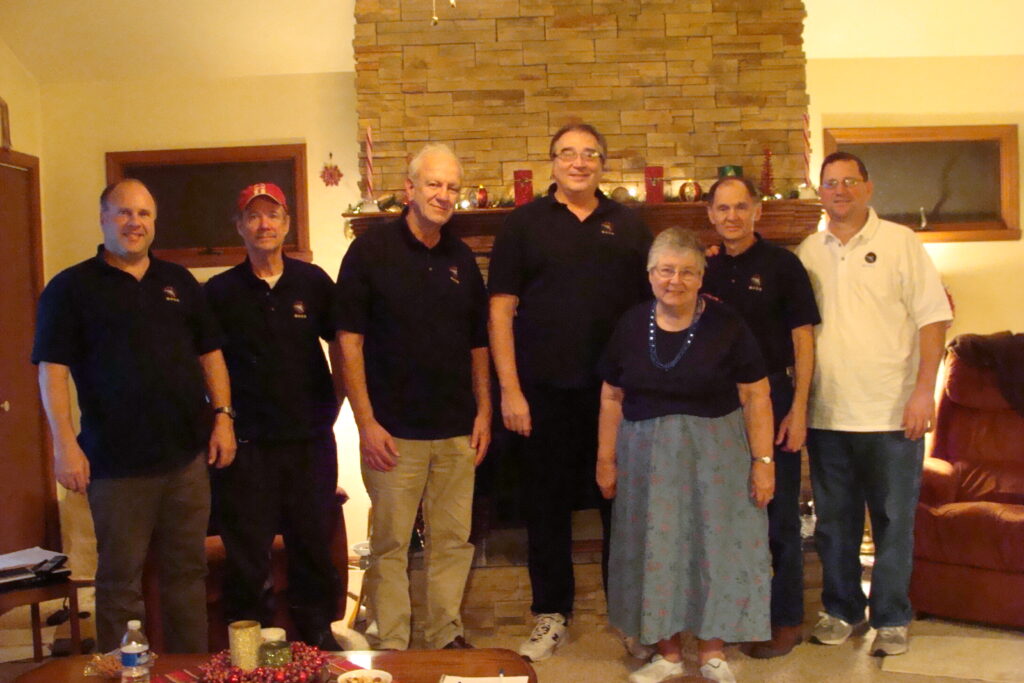
Prelims
For our first Prelims topic, we talked about a Daniel & Jorge Explain the Universe podcast explaining why gravity slows down time. Yes, gravity is equivalent to acceleration which also slows down time. The time effect of the twin experiment, where one twin rockets off at a quick speed and then returns to Earth at a younger age, is entirely due to the acceleration that he experiences while the other twin effectively stays motionless on the earth. Traveling at a constant velocity is a reciprocal effect, each observer sees the other’s clock run slower, so it is a wash or equivalent effect for the two people, but acceleration is an observable effect and impacts one person, not the other. Acceleration warps time, just like mass warps space. The effects of gravity makes your feet younger than your head because they are in a higher gravitational field. For astronauts orbiting at 17,500 mph, about 10% of the time dilation of accelerating around the Earth is countered by the lower gravitational field they experience 250 miles farther from the center of the earth. Clocks on the second story of your house will run faster than the ones in your basement because of the lesser gravitational field on the higher floor. You will have to invest in atomic clocks to document the difference.
The MASS Prize for people in space in 2021 has reached a count of 40, exactly the number Dean has guessed. If Russia launches another Soyuz in December the count will go to 43, exceeding Keith’s guess by only 1. But if New Shepard flies again with a crew of 6 before year’s end, the count goes up to 49 making Carol’s guess of 50 the closest. Time will tell. See the latest update under the title of “MASS on Commercial Crew” and select “Here are the guesses by the group and the latest status” on our website massCosmos.org .
Since our meeting Blue Origin announced that they do intend to fly their New Shepard capsule with a crew of 6 on December 9th. The crew consists of Michael Strahan of the “Good Morning America” ABC News program and Laura Churchley, the daughter of Alan Shepard, the first man in space from the US, plus a father-son pair and 2 other paying customers. Strahan and Churchley are guests and are not paying for their flight.
Mankind has set a record for person-days in space in 2021. The total is up to 2,741 days as of tonight, with 10 people in orbit, the total should reach 3,200+ person-days by year’s end. The old record was 2,190 days in 2010. The US will also set a record for the most days in space by a country this year, surpassing the old record set by the Russians in 1994 with 1,187 days. The US will have 1,133 days in space as of tonight and by year end it be over 1,300. The old US record was 1,065. The records are due to the larger crew size on the ISS enabled by the Crew Dragon and also the Chinese manning their space station for a majority of the year.
SuperCluster.com website has removed the skipped number in their people in space list, so their 601 count is the correct number. The CREW3 mission will add 602, 603 and 604 because of the 3 rookies on the Dragon capsule. NASA’s count for people in space is 3 lower than SuperCluster, probably because they don’t count the 3 rookies on the Challenger Shuttle flight that exploded on ascent. I think we should consider those 3 people as having gone into space. On November 2nd this year, we celebrated 21 continuous years for people in space on the ISS. Quite an achievement!
I’m considering a new MASS Prize now that 2021 is winding down. What do you think of guessing the first orbital launch dates for SLS and Starship? Musk thought Starship will go orbital in January 2022. Starship is an amazing rocket with 2.3 times the thrust of the Saturn 5. There eventually will be 33 engines on the Super Heavy first stage. I hope it won’t have the problems like the Russian N1 moon rocket of the 1960’s. That rocket had 30 engines and had 4 failures in 4 launch attempts. Musk says the Starship will fly a dozen times in 2022. NASA, on the other hand, said the SLS will launch the Artemis 1 mission in February 2022. But then the rocket will not fly for more than 2 years. Any other suggestions for a new Prize?
In a recent podcast, Elon Musk weighed in on the Fermi Paradox and said there could be a lot of aliens or none, both outcomes could be scary. Is there a gate that eliminates tech civilizations, a gate that we must also pass thru to survive?
HLS (Human Landing System) for Artemis Moon Program
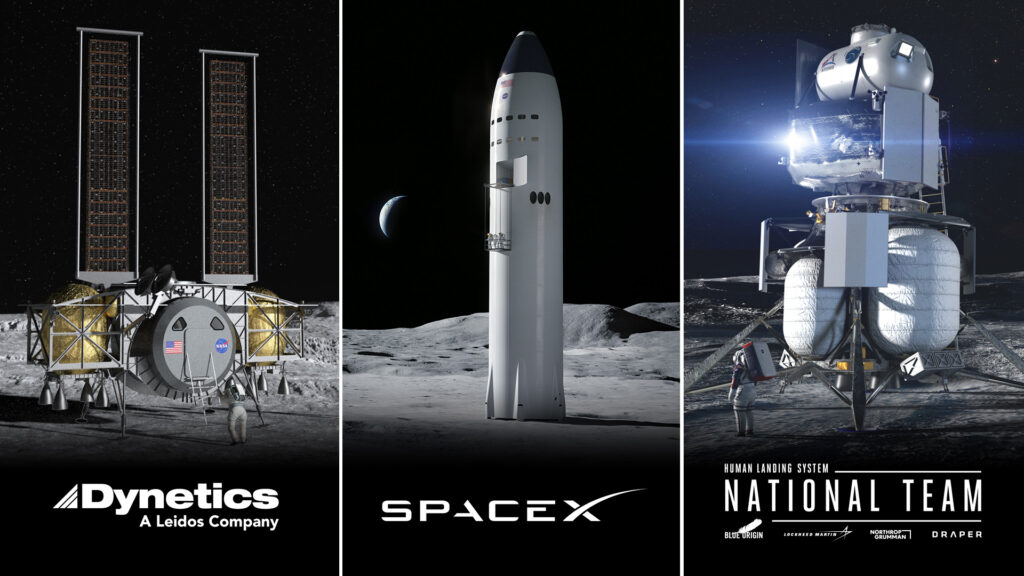
We quickly plunged into getting everyone familiar with the history of HLS. I tried to give a broad brush history of the HLS program. The Angry Astronaut gave a good summary in his 21 minute video. He is a fan of SpaceX and very negative on Blue Origin. Dynetics, one of the three team proposing HLS solutions, has also given him some exclusive content, so he is very much in favor of giving them the second team contract. SpaceX won the contract initially from NASA for the first two moon landings, one unmanned and the second manned. But Blue Origin sued NASA that there had to be two teams selected. Blue Origin eventually lost the suit, but they managed to delay the HLS program for several months.
The 3 Teams have made the following bids for HLS: 1) SpaceX $2.94 billion for a lunar Starship; 2) Blue Origin $5.99 billion for the Blue Moon Lander (but Bezos later offered to cover the first $3 billion out of his own pocket); and 3) Dynetics $9 billion for the Alpaca lander. From my perspective, the SpaceX Starship will need 10 refuelings in orbit which is a big complication. But on the other hand, the Starship will bring 100 metric tons of payload to the lunar surface. That amount of payload vastly exceeds the other team’s capability. Dean also feels that the tall Starship is going to be unstable trying to land vertically on an unprepared lunar surface. Blue Origin’s solution has an enormous 30 foot ladder in its design. I can see astronauts taking hours and risking their life trying to descend and ascend it with a cumbersome 300 lb spacesuit. Blue Origin’s solution has no reusability, which will make it difficult for Artemis to be a sustainable program. Dynetics has their enormous cost, but their low-slung solution seems the simplest and safest. They are reusable too. It could be the best solution for the initial landings.
Your have to remember the initial contract is only for 2 landings on the moon. The Artemis astronauts will launch from earth in the Orion capsule on an SLS rocket. The HLS craft will dock with Orion in lunar orbit and take the astronauts to the lunar surface. After completing the lunar mission, the HLS craft will take the astronauts back to lunar orbit and then transfer back into Orion for travel back to earth and splashdown.
I helped compare HLS to other NASA commercial contracts like Commercial Cargo which picked two teams, SpaceX with cargo Dragon and ATK/Orbital/Northrup Grumman with the Cygnus module. Each team had one early failure, but both have been successful supplying the ISS. The other program, Commercial Crew, with SpaceX’s Crewed Dragon which has sent astronauts to the ISS 4 times successfully and Boeing’s Starliner capsule which has yet to even perform an unmanned test mission to the ISS. This is even after Boeing received $4.2 billion for development compared to only $2.6 billion to SpaceX. Which proves money alone doesn’t guarantee success.
As a group everyone agreed that a second team should be selected for HLS. Everyone thought SpaceX is a good choice but we were divided on the second choice. Four of us picked Dynetics. Although we had heartburn with the cost, remember we are in this to beat the Chinese in establishing our presence on the moon. That means embracing, in the short term, the expensive SLS with its $4.1 billion cost to launch and the costly to develop but maybe the simplest solution of the Dynetics Alpaca lander as an alternative choice to Starship. If Starship runs into technical problems, Alpaca could keep Artemis on the timeline. Dean, Phil and Keith thought Blue Origin with its “tried and true” design would be the better second choice. If we take Bezos at his word for the $3 billion in self funding, the Blue Moon lander would have the same price as SpaceX and although ungainly, their solution would get people to the lunar surface with a safe design (except for the ladder) similar to the Apollo LEM lander.
The US Senate Committee says NASA must pick a second HLS team but they added only $100 million to the $1.295 billion HLS line item. NASA has 30 days to explain to Congress how they will comply. The Senate is giving NASA a total budget of $24.83 billion for FY 2022, the House gave them $25.04 billion, and the White House asked for $24.8 billion. The House added $150 million to their HLS line item for a second team. The Senate also earmarked the improved second stage of SLS for $579 million. That allotment seems a little high and I’m not sure we have demonstrated a need for this extra SLS Block 1B capability. They do kiddingly call the SLS the “Senate Launch System”.
Bottom line, I think the US should make a decision on the HLS capability soon, adequately fund the program, and stick to the program without making spurious and expensive changes. It is the only way we’ll beat the Chinese and establish the first permanent presence on the moon. After those initial forays, we should make the program sustainable. Capabilities should incorporate reusability of equipment. If the SLS cannot compete with more cost-effective solutions, it should be dropped. It looks like the Trump-era goal of landing on the moon by 2024, had no basis in reality. It seems like NASA’s original timeframe of 2028 might make more sense. Let’s do it right, in a sustainable manner and at a reasonable cost. Let’s let the engineers and scientists dictate most of the plan, not politicians. But we need to be aware of the timeframe, if we delay to 2030, we might have to ask China where we can land.
JWST (James Webb Space Telescope)
The launch was originally scheduled for December 18, Saturday, at 6:20 AM. NASA TV will cover it about 90 minutes before and 1 hour after launch. Since the meeting, the launch has been delayed 4 days to December 22nd at the same 6:20 AM time. While stacking the telescope on the Ariane 5 rocket, a band snapped and sent a shudder through the telescope. To be safe, NASA said they needed 4 days to re-evaluate whether any damage was done. So far, they said “no damage”.
On October 12, after 16 days at sea the telescope arrived at French Guiana. It is poised to launch Dec 22, 14 years later than originally planned. With Ariane 5’s launch of the SES 17 satellite on Oct 23, there has been a successful second test of the new fairing. When you view the 29 days of deployment, it almost makes the launch a trivial matter. At a NASA briefing it was explained that the JWST has 344 single point failures. Of those components, 80% are mechanisms of which 140 are release mechanisms, 70 are hinge assemblies, 8 are deployment motors, 400 are pulleys, and 90 are cables with 1312 ft of cable. The sun shield is the biggest concern for deployment. The shield has a SPF of 10,000,000. It consists of 5 layers, 16-18 inches apart. The deployment starts on day 3 and takes about 3 days. The 18 hexagonal mirrors have 7 degrees of adjustment. Scientists know the mirrors will be out of adjustment when the telescope reaches the L2 point and they have a long time allotted to make the mirrors act as one.
There has been a controversy with the name of James Webb for the telescope. Webb was NASA’s second administrator and instrumental with the Apollo program and insuring that NASA has a major science component to its mandate. But he might have been not so nice to LGBQ people during his previous position in the State Department. From my perspective, you have to keep a historical perspective on people’s positions and decisions. The “cancel culture” should not use isolated comments to assassinate every person that had a position of power. I’m glad NASA kept the name for the telescope. But a local NASA advisor quit over keeping the Webb name on the telescope. Lucianne Walkowicz an astronomer at Adler. I think she hurt her own standing by stepping away from NASA over the issue.
Here is a Science News deployment video. At 27 minutes after launch, the telescope separates from launch vehicle; 31 minutes after, the solar arrays unfold; 12.5 hours after, a course correction is made; at 2.5 days, another course correction is performed; at 3 days, the sun shield pallets are lowered; at 5 days, the stabilization flap deploys; at 6 days, the horizontal sun shield poles are extended pulling out the mylar sun shield; at 7 days, the vertical sun shield poles are extended separating the 5 layers over several days; at 10 days, the secondary mirror unfolds; at 12 days, the primary mirror side segments open and latch in place; at 28 days, the high gain antenna begins transmitting; at 29 days, the telescope arrives at the L2 point with another course correction; at 96 days, the final temperature of 40 K for mirrors and near infrared system and <7 K for mid-infrared system is attained; at 118 days, the 18 telescope segments are aligned; at 180 days, calibration of the science instruments is completed. We have our next telescope for the next decade!!
The farthest that the Hubble has seen is a galaxy called GN-z11 which is about 13.4 billion light years away. At a red shift of z=11, (z=11 means a 12 times line extension, z=1 means a doubling of the line wavelength, so z=11 means a 500 nanometer(nm) blue light spectroscopy line is shifted by a factor of 12 to 6000 nm in the infra-red), this galaxy appears as it was 400 million years after Big Bang. JWST might see back to only 100 million years after the Big Bang when the first stars and galaxies were starting to form. JWST might see back to a red shift of 20 or 30. The L2 Lagrange Point is the only place where a single shield can shade you from the sun, the earth and the moon. But the telescope has solar panels, so the hot side of JWST will be in sunlight. John Mather, the JWST senior project scientist, is not worried, he made the best plan possible and is satisfied with it. I guess that gives be some solace.
JWST will study how galaxies evolved, how stars and planetary systems form (because it can look thru dust), how exoplanets and our solar system evolve (it will observe planets from Mars outward), and study gases in exoplanet atmospheres. Remember JWST is an infra-red telescope exclusively, so what it sees, our eyes cannot. Its pictures will have to be artificially colorized to show us what is being imaged. The following diagram shows how little of the electro-magnetic spectrum our eyes can see.

If you want the JWST deployment in detail, see below.
1ST HOUR: Starting at liftoff, the Ariane rocket will provide thrust for a little over 8 minutes. Webb will separate from the Ariane V launch vehicle a half hour after launch and we will deploy the solar array immediately afterward. We will also release several systems that were locked for launch.
1ST DAY: Two hours after launch we will deploy the high gain antenna. About ten and a half hours after launch, Webb will pass the Moon’s orbit, nearly a quarter of the way to L2. Twelve hours after launch there will be the first trajectory correction maneuver by small rocket engines aboard Webb itself.
1ST WEEK: The second trajectory correction maneuver will take place at 2.5 days after launch. We will start the sequence of major deployment just after that. The first deployments are the fore and aft sunshield pallets, followed by the release of remaining sub-system launch locks. The next deployment is the telescope in which the telescope and the spacecraft bus move apart from each other by about 2 meters when the deployable tower assembly extends. The full sunshield deployment with unfolding and tensioning of the membranes can then be initiated. At 6 days we deploy the secondary mirror, followed by the side wings of the primary mirror.
1ST MONTH: As the telescope cools down in the shade of the deployed sunshield, we will turn on the warm electronics and initialize the flight software. At the end of the first month, we will do the mid-course correction that ensures that Webb will achieve its final orbit around L2. Although the telescope cools to near its operating temperature, the Integrated Science Instrument Module (ISIM) is warmed with electric heaters to prevent condensation on the instruments as residual water trapped in the materials making up the observatory escapes to the vacuum of space.
2ND MONTH: At 33 days after launch we will turn on and operate the Fine Guidance Sensor, then NIRCam and NIRSpec. The first NIRCam image will be of a crowded star field to make sure that light gets through the telescope into the instruments. Since the primary mirror segments will not yet be aligned, the picture will still be out of focus. At 44 days after launch we will begin the process of adjusting the primary mirror segments, first identifying each mirror segment with its image of a star in the camera. We will also focus the secondary mirror.
3RD MONTH: From 60 to 90 days after launch we will align the primary mirror segments so that they can work together as a single optical surface. We will also turn on and operate the MIRI. By the end of the third month we will be able to take the first science-quality images. Also by this time, Webb will complete its initial orbit around L2.
4TH – 6TH MONTHS: At about 85 days after launch we will have completed the optimization of the telescope image in the NIRCam. Over the next month and a half we will optimize the image for the other instruments. We will test and calibrate all of the instrument capabilities by observing representative science targets.
AFTER 6 MONTHS: Webb will begin its science mission and start to conduct routine science operations.
Extras
Time was short, so we made only a cursory comment of the following topics.
DART launching Nov 24 – This website has a short video of the 10 month travel to target, 10 days ahead of encounter DART will release a cubesat that will fly past asteroid moon Dimorphous (160 m diameter) 3 minutes after collision, 30 days ahead DART will try to find target and is automated at 4 hours before encounter. It will see the moon only 1 hour before encounter. The 15000 mph impact should slow down the moon and make it go into a lower quicker orbit. Scientists anticipate a 10 minute change to the 11 hour and 55 minutes original orbital period. DART is a 2 year mission costing $330 million.
Russia has a new law that requires Russian reporters to be considered foreign agents . This ruling won’t affect coverage by organizations outside of Russia. The reality is that the Russian space corporation is run by a political figure and friend of Putin’s, Dmitry Rogozin, who appears to be using it to enrich himself. Roscosmos pays its employees very poorly, and as a result overall quality appears to be decreasing, with several recent launch and spacecraft failures (with horrific attempts at deflection of responsibility). Overall, a once great space nation has seen its status fall from an undisputed leader to an also-ran behind the United States, China, and even some US companies. Perhaps it is not difficult, after all, to understand why Putin and Rogozin would not welcome domestic coverage. Putin to cut Roscosmos budget by 16% (down to $2.9 billion), things look bleak for Dmitry Rogozin, he obtained expensive cars and house while jailing people for theft at the new launch area in eastern part of Russia. The loss of money from NASA for Soyuz flights ($400 million annually) and no RD-180 engine purchases by ULA has hit the Russian space program hard.
A Russia anti-satellite test created 1500 identifiable pieces of debris that threaten the ISS. An old satellite in a polar orbit was used as the test subject, probably as a cost cutting measure. Clean up efforts for space debris might need to be increased. Putin may think that Russia has fallen so far behind China and the US, that there only course is to deny certain orbits to everyone. Tests of the Soyuz capsule thrusters bringing the Russian actress down tilted the ISS by 57 degrees. The thrusters were tested as usual before undocking but this time the software didn’t shut off after the test. Soyuz was later successfully undocked and deorbited on October 17 and brought the 3 people safely down to a landing in Kazakhstan.
Russia finally has said the Dragon capsule is safe enough for its cosmonauts. Because it takes SpaceX almost a year to make a custom flight suit, a cosmonaut won’t fly on Dragon until the Fall of 2022, on the CREW5 mission. I have not heard if the US and Russia have finalized their agreement to trade seats where a cosmonaut will fly on Dragon and a US astronaut will launch on Soyuz with no exchange of money.
Samples brought back on China’s Chang’e 5 from Mons Rumber, an inactive volcano in Oceanus Procellarum, are 1 billion years younger than the Apollo samples. China’s lander drilled and scooped 1.73 kg of soil and rock. Then the ascent module rose from the surface and returned the samples to Earth on December 17 last year. Their samples yielded an age of 1.97-2.03 billion year old basalts. This is 1 billion years younger than the samples from Apollo which were 3 billion years old. China’s samples were also exceptionally dry, with just 1-5 parts per million of water. That is less than 5% the water content of the Apollo sites. Water and radioactive elements would help with any recent melting of the rocks but those elements are scarce in the samples. So far, samples have been only distributed to Chinese institutions.
Scott Manley talking about the 3 new space stations designs. Blue Origin announced their plans for their “Orbital Reef” space station. They are partnering with Boeing and Sierra Space for the facility. They join Axiom Space that is purchasing flights on Dragon and building modules to attach to ISS. The third team is Lockheed Martin and Nanoracks who have a station called Starlab. Ars Technica also talked about the 3 company’s plans.
Gamma Ray Bursts were explained in Paul Sutter 15-minute video. The long (>2 sec) bursts are a big star collapsing to a black hole(a collapsar), forming an accretion disk and then sending out polar jets. They occur in the arms of spiral galaxies. The short bursts (<2 sec) are neutron star collisions (kilonovas) forming a accretion disk. They occur in red old galaxies because those galaxies have a lot of neutron stars. Two other possibilities for the short bursts are magnetars, which are highly magnetic neutron stars and tidal disruption events, where a black hole might shred a star. NASA has just announced a gamma ray mission to explore positron sources and supernovae called COSI (Compton Spectrometer and Imager. It is a $145 million mission excluding launcher that will launch in 2025. COSI will catch emission from the center of the Milky Way (similar to Dan Hooper’s talk at Triton College which was about a dark matter gamma ray signal) and try to determine the source. COSI will have 2x the resolution and a 4x larger field of view than the Compton Gamma-Ray observatory (1991-2000). NASA has 2 other gamma ray observatories in operation, the Swift Observatory and the Fermi Gamma-ray Space Telescope.
Juno spacecraft has determined that the Red Spot on Jupiter goes down 300-500 km (186-310 mi). With a size of 10,000 miles, the storm is bigger than the Earth. Even with a depth of 300 miles, the Red Spot isn’t as deep as the surrounding jet streams that go down 3000 km (1800 mi). Juno is currently in a 53 day orbit starting in 2016 and has been extended until September 2025 which will allow 42 more close approaches including the moons Ganymede, Europa, and Io. Observations of the moons will help future missions like NASA’s Europa Clipper and Juice from ESA.
There have been 35 more detections of gravitational waves from the November 2019 to March 2020 third observing run. 32 of the detections were caused by two black holes merging, 2 were neutron star-black hole mergers, and one was of mysterious origin. Total detections are now up to 90. The heaviest detection had a combined mass of 145 times mass of the sun. The lightest black hole merger was a pair with a combined mass only 18 times the mass of the sun. Four gravitational wave detectors are now constructed, 2 are in LIGO in the US, one is Virgo in Italy and the last is Kagra in Japan. The next observation run will begin in August 2022 after LIGO and Virgo are upgraded.
Spin launch is a company trying a different method of launching rockets. They are launching from Spaceport in New Mexico using a vacuum sealed centrifuge. The current facility is a 1/3 scale but is still 165 feet tall. They are spinning at 180 rpm and launching a 10 foot long projectile. Ultimately their rocket will have to withstand 10,000 G’s in final version that uses a 100 meter long arm and spins at 450 rpm. Scott Manley explains their efforts to launch at mach 7 speed. They use only a few megawatts for the 1.5 hour spin up time. I think this method might be great for the moon. You already have a vacuum and the gravity is only 1/6 of earth. I also think you would want a linear rail gun rather than a spinner.
We adjourned at 10:15 PM wishing each other happy holidays because the next meeting probably won’t be until next year.
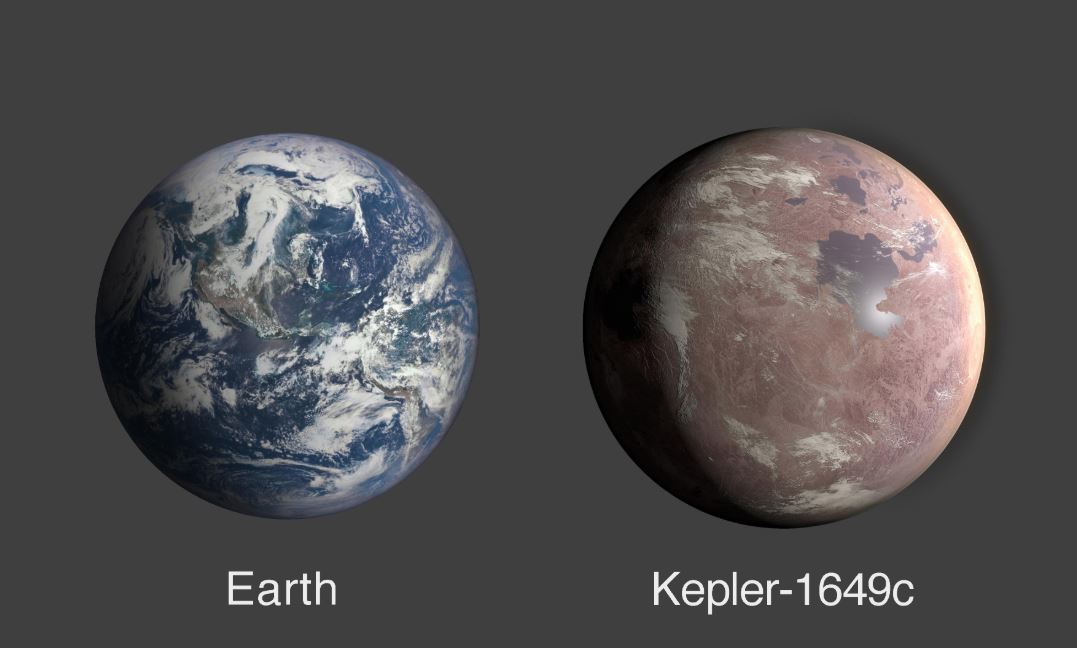
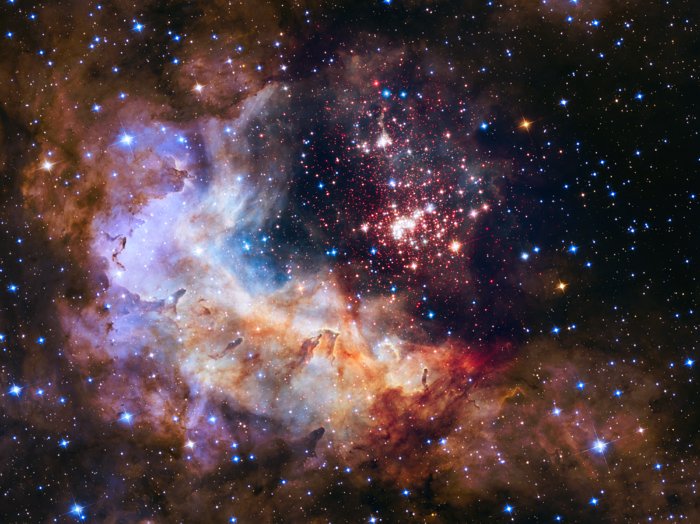
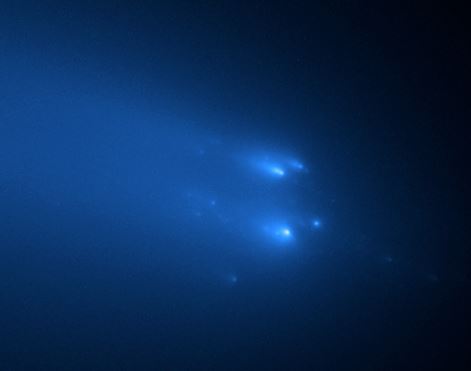
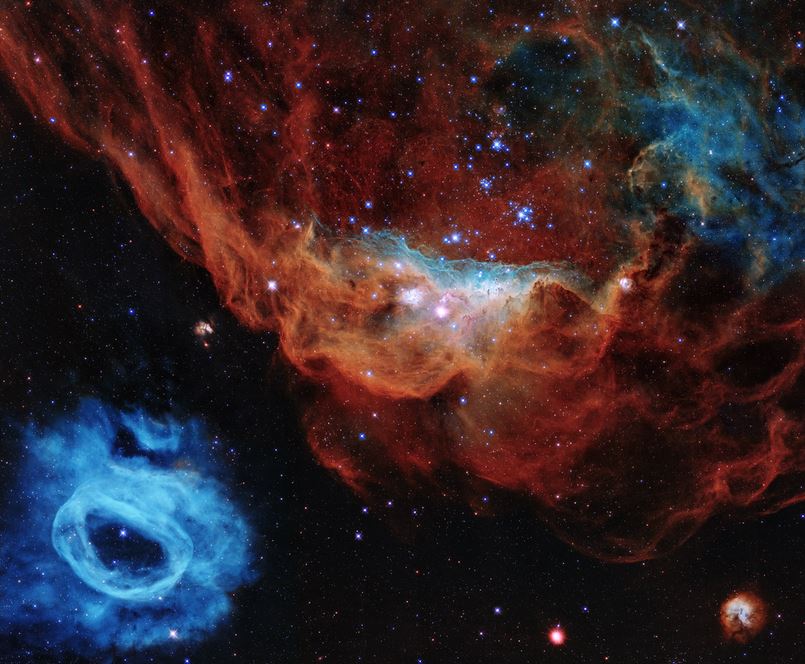

Recent Comments